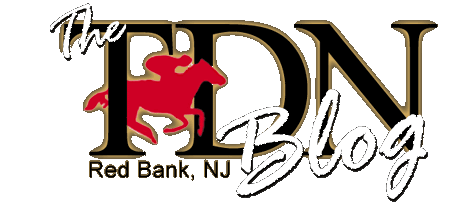--Mark Cramer
What if there’s a hidden connection between the gradual banishment of horse racing from public-media consciousness and the gradual banishment of agriculture from suburban areas?
I visit two daughters who live in suburbia and I see no farms around, and no horses. Since the 1950s, little by little, suburban farmland was sold to housing tract developers, while local communities were not able to, or did not want to, keep farms around. Ironically, the ideology of suburbia, that is, to be closer to “Nature,” was actually a way to eliminate a more authentic type of nature from the landscape.
In most suburban areas, children grow up seeing thousands of cars zooming by per day, and not a single horse. No wonder NASCAR makes more sense to them than the Triple Crown.
Of course, the consequences of this evolution go beyond racing. Local agriculture (called ‘periurban’ in France) means less transport of food and fewer inputs, and therefore less use of fuel and less pollution.
In France, we have the AMAPs, a loose network of “Associations for the Maintaining of Peasant Agriculture,” whose principle is “to create direct links between food producers and consumers.” In the USA, farmers’ market networks operate in a similar way. Accompanying this structure, periurban agriculture reintroduces farming to suburban areas. The food tastes better and the environment gains a few lengths.
Horse farms and riding stables have also been the victim of expanding suburbia. Back in 1999, the New York Times’ Long Island Journal wrote that “suburbia puts the squeeze on horse country.” A 2006 edition of Savvy Equestrian referred to the fact that “horse farm owners are suddenly surrounded by suburban home owners with idealized notions about rural life and who object to the realities of adjacent farms and stables.”
The American Farmland Trust wrote that “every year in the U.S., more than 6 million acres of agricultural land, an area the size of Maryland, are lost to development.”
But nowadays, increasing numbers of citizens are trying to reverse the trend, with projects for urban and suburban agriculture. In “Lawn to Farm: Suburbia’s Silver Lining,” Wylie Harris writes that, “without some miraculous new energy source, muscle power could soon again be a cheaper alternative to fossil fuels.” Articles abound about individuals and families who are turning their static lawns into active farmland.
Back in the late 1970s when I first heard of an oil crisis, I took off for a year outside Los Angeles, on a small farm. At the start I applied for a license, but the Department of Agriculture rep told me, with a broad grin on his face, that my place was far too small, and too primitive. “Just go ahead and sell your fruit, vegetables and eggs to Korean grocers. No need for a license.”
Jared Flesher’s film, The Farmer and the Horse: a new generation of farmers, tractors optional follows three young people trying to get into agriculture in New Jersey, each of whom has a passion for working with horses. This DVD will probably fall through the cracks, and the reviews are sparse and mixed, but it’s another piece in an expanding network of experiments with renewing small farms in places where farms have been pushed out.
I cannot prove that new generations, if exposed to farms in the neighborhood and horses on the farms will be more likely to partake of the thrills of horse racing. But the connection is there. A 2009 seminar in Michigan called Horses and the Environment was purposely scheduled on the first Saturday in May, so that the participants could view the Kentucky Derby.


No comments:
Post a Comment